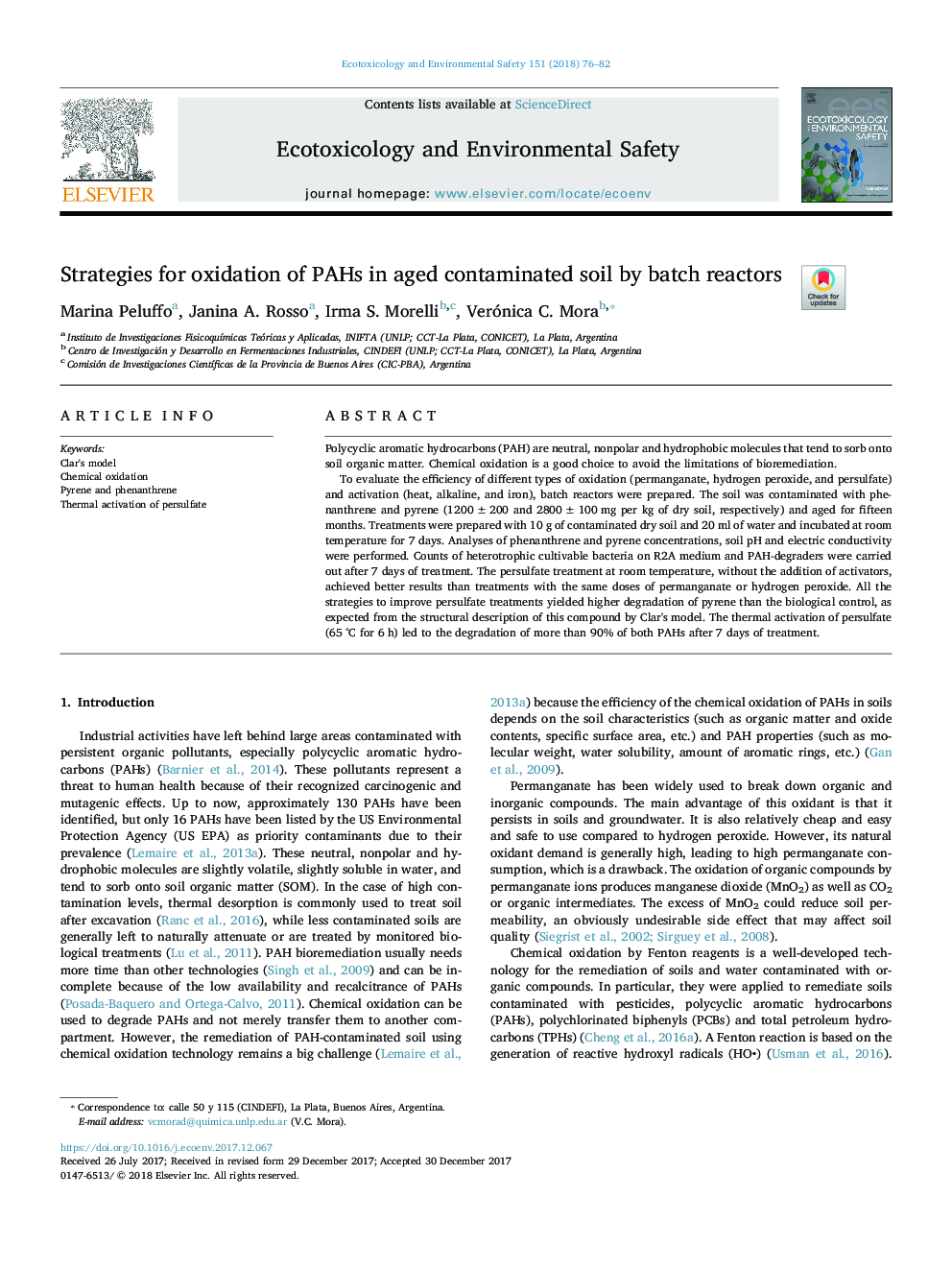| Article ID | Journal | Published Year | Pages | File Type |
|---|---|---|---|---|
| 8854309 | Ecotoxicology and Environmental Safety | 2018 | 7 Pages |
Abstract
To evaluate the efficiency of different types of oxidation (permanganate, hydrogen peroxide, and persulfate) and activation (heat, alkaline, and iron), batch reactors were prepared. The soil was contaminated with phenanthrene and pyrene (1200 ± 200 and 2800 ± 100 mg per kg of dry soil, respectively) and aged for fifteen months. Treatments were prepared with 10 g of contaminated dry soil and 20 ml of water and incubated at room temperature for 7 days. Analyses of phenanthrene and pyrene concentrations, soil pH and electric conductivity were performed. Counts of heterotrophic cultivable bacteria on R2A medium and PAH-degraders were carried out after 7 days of treatment. The persulfate treatment at room temperature, without the addition of activators, achieved better results than treatments with the same doses of permanganate or hydrogen peroxide. All the strategies to improve persulfate treatments yielded higher degradation of pyrene than the biological control, as expected from the structural description of this compound by Clar's model. The thermal activation of persulfate (65 °C for 6 h) led to the degradation of more than 90% of both PAHs after 7 days of treatment.
Keywords
Related Topics
Life Sciences
Environmental Science
Environmental Chemistry
Authors
Marina Peluffo, Janina A. Rosso, Irma S. Morelli, Verónica C. Mora,
